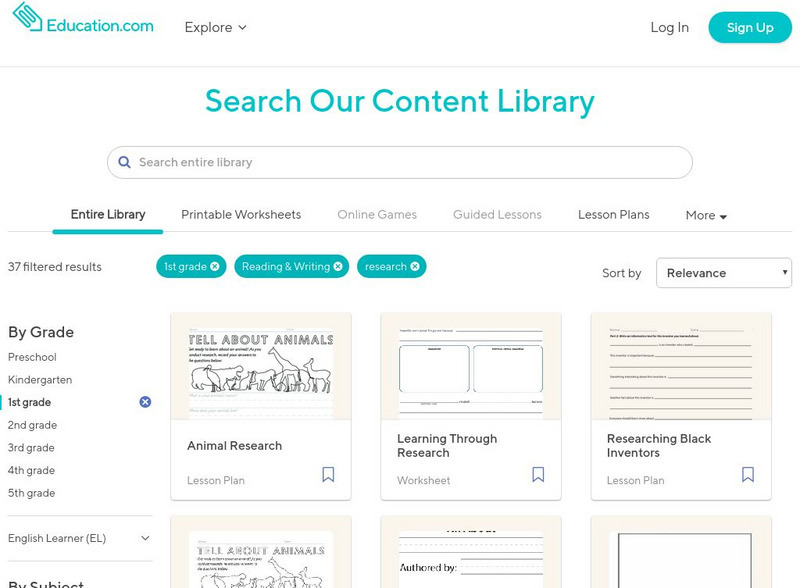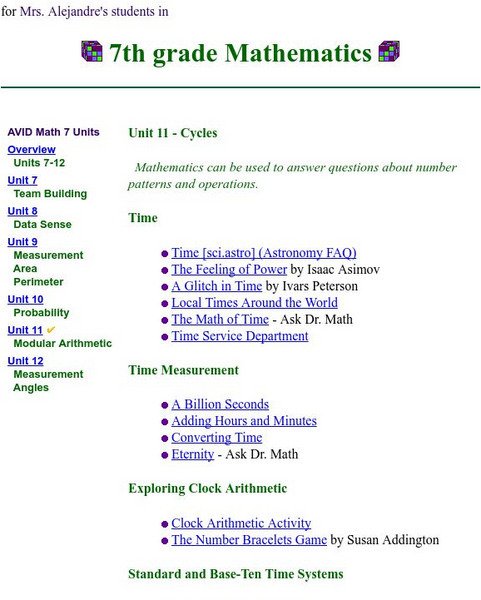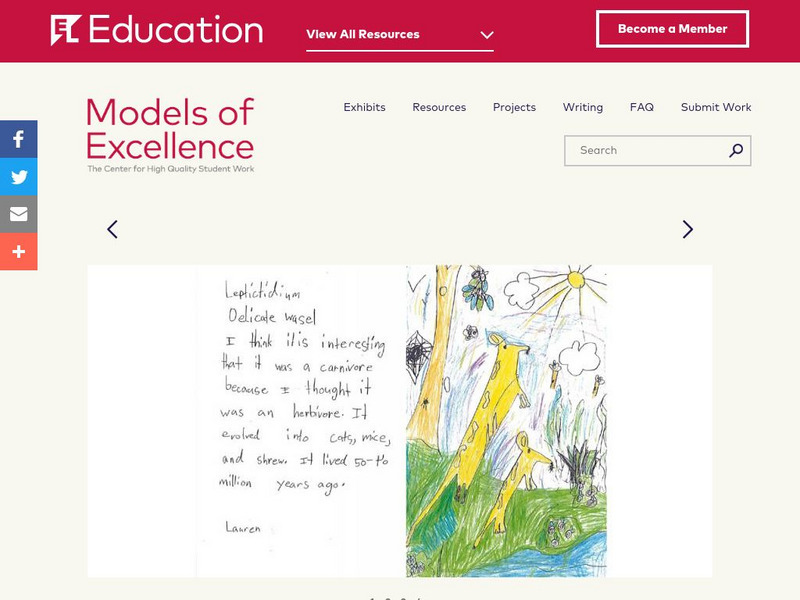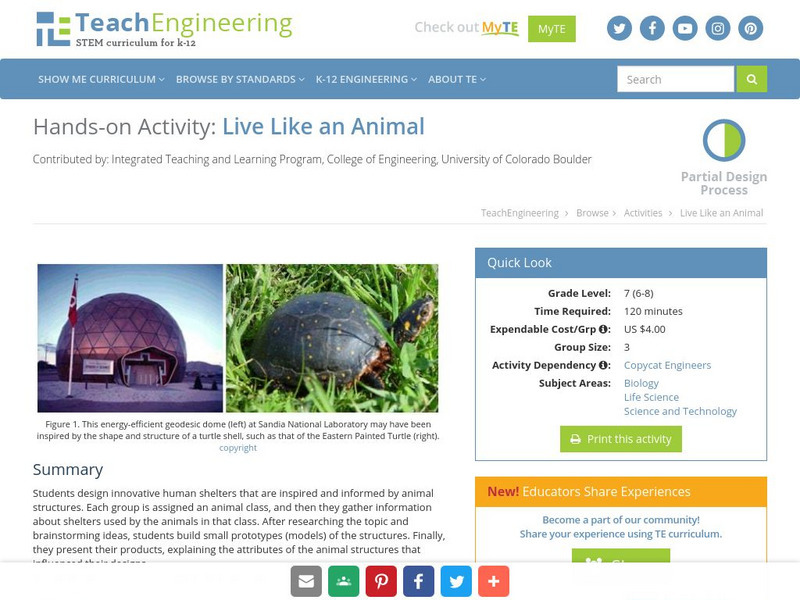Hi, what do you want to do?
National Geographic Kids
National Geographic Kids: Animals: Tigers
"The scientific name for the tiger is 'Panthera Tigris.'" This site includes video and audio clips, fun facts and a map. Other web links are available, which makes this a good site for research projects.
Other
Illinois Wesleyan Univ.: Tardigrade Species Distribution Project: Lesson Plan
This lesson plan was for classes that participated in a research project on tardigrades that took place in 1999. Tardigrades, also known as water bears, are fascinating, tiny creatures that can survive under the most extreme conditions....
Friends of Algonquin Park
The Science Behind Algonquin's Animals: Moose
Information is provided on the moose, its general appearance, weight, migration, food sources, habitat, and major predators. This is excellent information for a student research project.
Friends of Algonquin Park
The Science Behind Algonquin's Animals: Brook Trout
Learn about the Brook Trout's appearance, size, migration, food sources and breeding as well as the answers to other interesting research questions. Included is a video showing the capturing and marking of a Brook Trout and an...
Friends of Algonquin Park
The Science Behind Algonquin's Animals: Painted Turtle
Excellent information is provided on the painted turtle's appearance, weight, migration, food sources, predators and breeding. Research questions provide the answers to many common questions such as how long they live.
Friends of Algonquin Park
The Science Behind Algonquin's Animals: Black Bear
Known as the American Black Bear or commonly the Black Bear, information is detailed on its appearance, weight, migration patterns, food sources, major predators and breeding. This is an excellent resource for the student researcher.
Other
Bio Ethics Education Project (Beep): Animal Ethics
The tutorial examines animal ethics. Topics explored are animals in research, animals as recreation, animals as food, and animals at work. The resource consists of articles, questions, additional resources, and activities.
Better Lesson
Better Lesson: Butterfly Bush Visitors
In this lesson, the children learn about how critters depend on the butterfly bush and how the butterfly bush, in turn, depends on it. Common Core writing skills are integrated as they take it to the next step, and create their own page...
Education.com
Education.com: 1st Grade Reading & Writing Resources
[Free Registration/Login Required] This collection of first grade reading and writing resources contains lesson plans and worksheets that can be used during the research process.
EL Education
El Education: Local Habitat Survey and Animal Research
Students observe animals in several habitats and then choose one animal to research. Students learn about physical adaptations that help each animal live successfully in its habitat and then draw a picture of their animal which is later...
Other
Path Finder Science: Tardigrades
This site displays information about a tardigrades research study that students were involved in. Tardigrades are fascinating, tiny creatures that can survive under the most extreme conditions. The structure of the project is there for...
Alabama Learning Exchange
Alex: Beanie Baby Habitats Collaborative Project
With the booming market of "Beanie Baby" type stuffed animals being so prominent in students' lives, this project brings that interest into the classroom through the use of research, science, hands-on experiences, and technology. The...
Friends of Algonquin Park
Factors Limiting Population Growth of Wolves in Algonquin Park
Information is given on the Eastern Wolf's appearance, migration, food, breeding and predators. Several of the topics are highlighted with video clips. Research questions and answers examine the environmental impact on the wolves in the...
National Council of Teachers of Mathematics
The Math Forum: Seventh Grade Mathematics: Cycles
Teachers can use this resource for creating interesting lessons about time and time measurement. There are articles about leap year, converting time, as well as other links for further research. An interdisciplinary project about an...
EL Education
El Education: Study of Bones and Skeletons
Students research animals and their skeletons and write informational text to share the information. The text is accompanied by digital images found online, and students' pages are combined into a class book.
EL Education
El Education: Sunrise Springs
Students work with local scientists and complete original fieldwork and research in order to write and illustrate brochures on indigenous animals for a local resort.
EL Education
El Education: River Calendar
Student of various ages work together to create an illustrated calendar of animals they observed and researched.
EL Education
El Education: Pre Historic Mammal Cards
Students study prehistoric people and animals and create trading cards with an original illustration of an animal on one side and facts about that animal on the other.
Georgia Department of Education
Ga Virtual Learning: Native American and Aztec Mythology
This is a comprehensive unit on Native American and Aztec Mythology including key terms, animals and archtypes, animal tricksters, totems, readings of Cherokee and California myths, the Aztec creation myth, research assignment with...
TeachEngineering
Teach Engineering: Finding Food in the Amazon
In this activity, the students will investigate a variety of plants and animals common to the Amazon through research. They will determine the plant or animal characteristics that make them edible or useful for the trip and learn to...
TeachEngineering
Teach Engineering: Live Like an Animal
In this activity, students design an innovative human shelter that is inspired and informed by an animal structure. Each group is assigned an animal class, and they gather information about shelters used by the animals in that class....
Curated OER
The Science Behind Algonquin's Animals: Moose
Information is provided on the moose, its general appearance, weight, migration, food sources, habitat, and major predators. This is excellent information for a student research project.
Exploratorium
Exploratorium: Science Snacks: Designer Ears
Why do animals' ears all look different? In this activity, you will research all shapes and function of ears to create "better" ears.
EL Education
El Education: A Field Guide to East Bog Swamp
This micro-field guide was created by 5th and 6th graders in Marlboro, Vermont. Groups of 3 or 4 students worked together to investigate their own 3 by 3 foot research plot, over multiple visits, and then created a field guide to their...




























